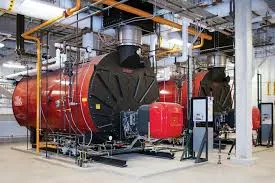Set . 07, 2024 08:46 Back to list
Classification of Heat Exchangers - Types, Working Principles, and Applications
Classification of Heat Exchangers
Heat exchangers play a crucial role in various industrial processes, facilitating the efficient transfer of heat from one medium to another. Their applications range from power plants and chemical processing to HVAC systems and food production. Understanding the classification of heat exchangers is essential for selecting the appropriate design for specific applications.
Heat exchangers can be classified based on several criteria, including their design, flow arrangement, and construction material.
1. Based on Design - Shell and Tube Heat Exchangers These consist of a series of tubes, one set carrying the hot fluid and the other carrying the cold fluid. This design allows for high-pressure and high-temperature applications, making them popular in industries like oil refining. - Plate Heat Exchangers These consist of multiple thin plates that create channels for fluid flow. They offer a high surface area to volume ratio and are efficient in heat transfer, making them suitable for food processing and chemical applications. - Air Cooled Heat Exchangers These systems use air to cool process fluids, often seen in power plants and refrigeration systems. They eliminate the need for cooling water, which can be advantageous in arid regions.
classification of heat exchanger

2. Based on Flow Arrangement - Counterflow Heat Exchangers Here, the two fluids flow in opposite directions, resulting in a more efficient heat transfer as the temperature gradient between the fluids is maintained along the entire length of the exchanger. - Parallel Flow Heat Exchangers In this design, both fluids move in the same direction. While easy to design, this arrangement is generally less efficient than counterflow systems, as the temperature differential diminishes along the flow path. - Crossflow Heat Exchangers The fluids flow perpendicular to one another. This arrangement is common in multiple applications, including air conditioning systems.
3. Based on Construction Material - Metal Heat Exchangers Common materials include stainless steel and aluminum, which provide good thermal conductivity and resistance to corrosion. These are widely used in environments where durability and longevity are essential. - Plastic Heat Exchangers Used mainly in applications involving corrosive fluids, plastic heat exchangers offer a lightweight and cost-effective alternative, although they may have lower thermal efficiency than metal counterparts.
Conclusion The classification of heat exchangers significantly influences their design and efficiency in various applications. Understanding these classifications helps engineers and designers select the right heat exchanger to maximize performance while minimizing energy consumption. By considering factors such as design type, flow arrangement, and construction material, industries can optimize their thermal processes, enhancing productivity and sustainability.
-
Durable Centrifugally Cast Iron Water Main Pipe
NewsAug.11,2025
-
Centrifugally Cast Iron Water Main Pipes for Reliability
NewsAug.10,2025
-
High-Quality Centrifugally Cast Iron Water Main Pipes
NewsAug.09,2025
-
Durable Cast Iron Water Main Pipe & Drainage Solutions
NewsAug.08,2025
-
Buy Cast Iron Pipe: Premium Ductile Iron & Drain Solutions
NewsAug.07,2025
-
Durable Cast Iron Water Main Pipe | Buy Ductile Pipe
NewsAug.06,2025


